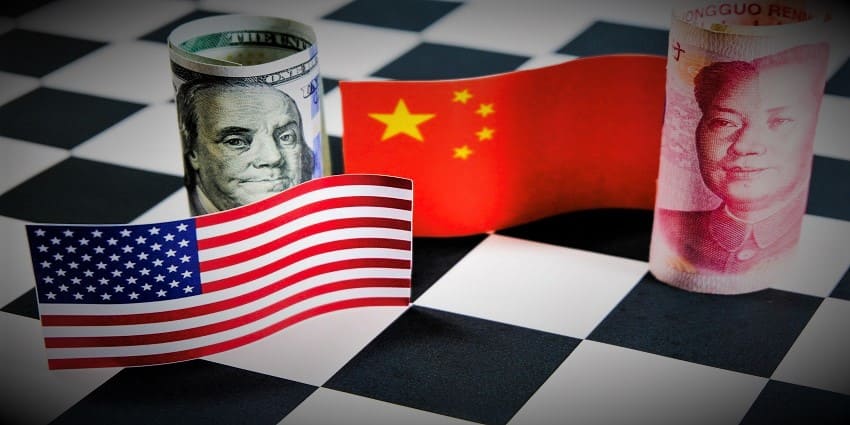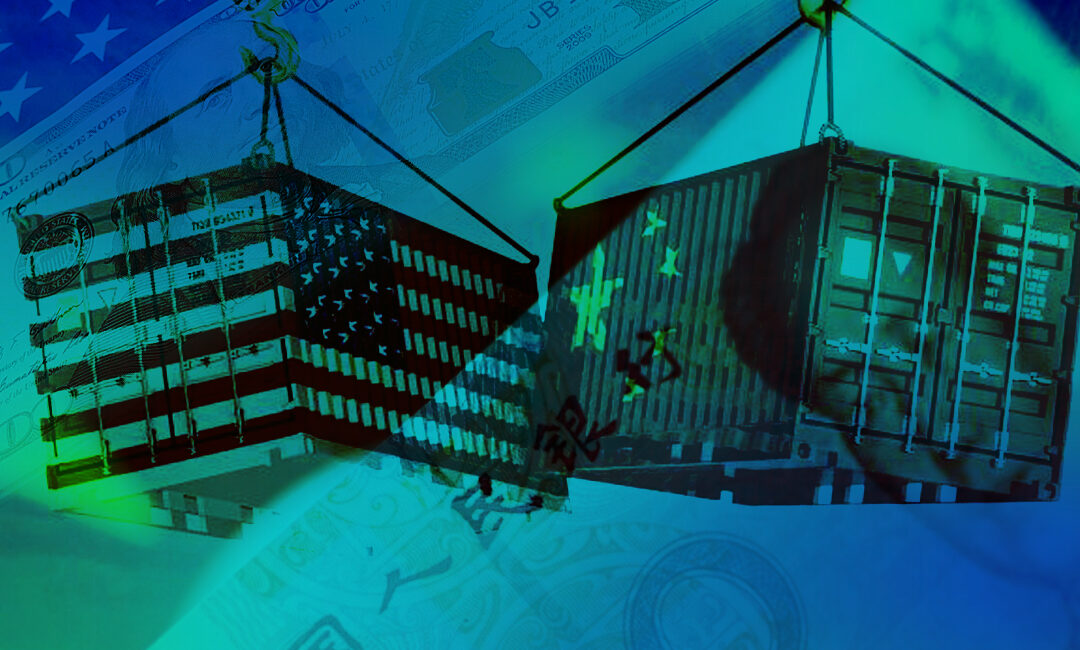
by Nicholas Mitsakos | Book Chapter, Economy, Public Policy, Writing and Podcasts
The world economy is struggling to escape the Covid-19 economic shock. During the worst of this pandemic, the world’s developed economies provided an enormous fiscal stimulus on a scale not seen since the second world war.
Now, however, the US is proposing to more than double its already generous fiscal stimulus. Is this a good idea or excessively risky?
Go Big, But Where?
For its proponents, the idea of “going big” is designed to be a transformative political moment. But too much appears allocated inefficiently, and it may simply be irresponsible.
An easy money era produced only anemic growth. But the scale and direction of additional stimulus look more like irresponsible fiscal policy leading to significant overheating and the waste of resources. While there is a strong case for a more aggressive approach to fiscal policy, that policy still needs to be grounded in economic realities and reasonable priorities. These are not.

by Nicholas Mitsakos | Book Chapter, Economy, Writing and Podcasts
The pandemic, Fed interest rate policy and bond purchases, restrictive banking regulations, and banks’ swelling cash balances will have a lingering impact on liquidity and produce some mind-bending policies to deal with this uncharted territory. As the pandemic emerged in March 2020, strange things happened: Bond markets seized up and investors panicked. Bond yields spiked causing severe price declines. Credit default swap prices (debt protection derivatives) rose 100x in less than a month. The dollar rose and liquidity dropped for U.S. Treasuries, usually the world’s most liquid security. There was substantially lower demand at U.S. Treasury auctions. The Federal Reserve responded with an almost never-ending pile of cash, buying vast quantities of bonds with newly created cash. It has continued its purchases, at a pace of at least $120 billion a month. But this has not resulted in “happy days are here again.” This mountain of dollars is limiting liquidity and constraining markets. That’s right, read that again if you must – too much cash can constrain the economy.

by Nicholas Mitsakos | Economy, Investments, Writing and Podcasts
The current low interest rate environment increases the discounted present value of future cash flows and reduces the return demanded for every investment. In other words, when the Fed funds rate is zero, 6% bonds become disproportionately attractive. Buyers have now bid bond prices up until yields are now significantly less. What does it mean if the prices of stocks and listed credit instruments are at levels not driven primarily by fundamentals reasons (i.e. current earnings and the outlook for future growth), but in large part because of the Fed’s buying, it’s injection of liquidity, and the resultant low cost of capital and the market’s lower demanded returns on financial instruments? My conclusions are limited by inadequate foresight and influenced by my optimistic and pessimistic biases. Experience teaches it is hard to get the answer right. Or, as Charlie Munger has said, “it’s not supposed to be easy. Anyone who finds it easy is stupid.” At the risk of being stupid, equity investments in companies, including the five largest, with the unique competitive positions and “closed-loop” business models will remain excellent investments. In addition, certain fixed income securities paying high yields with attractive long-term risk-adjusted safety are extremely attractive and are being ignored in this unique interest-rate environment. This combination will create substantial value. Unique macro forces created by the central banks, unprecedented and sustainably low interest rates combined with pandemic-tested sustainable business models have created truly unique opportunities.

by Nicholas Mitsakos | Currency, Economy, Investment Principles, Investments, Public Policy, Trade, Writing and Podcasts
We are rapidly approaching a zero-interest rate world. Interest rates are being driven to zero (or below zero in many cases) as a first-line tool for central banks to generate economic activity in the face of the dramatic negative impact of the pandemic, as well as existing and lingering economic fallout. This toolbox will be empty soon, and the only remaining weapon will be fiscal policy. Among other things, fiscal policy and domestic financial markets will have an overwhelming influence on global currencies. Capital flows will dramatically impact currency volatility as capital moves to more attractive countries with more liquid and robust asset markets.

by Nicholas Mitsakos | Economy, Investment Principles, Public Policy, Writing and Podcasts
Defining and the problem precisely is the only way to solve anything, and, undoubtedly, the single greatest challenge to achieving anything. Otherwise, it is a waste of time and resources (which describes most public policy). All too often decision-makers waste time, resources, and make matters worse because they simply do not understand the actual problem they’re trying to solve. Very few problems are well-defined, and few people take the time and effort to understand what it is they are trying to solve. Motivation, energy, and focus on an outcome are inefficient, misguided, and dysfunctional. Good intentions do not effectively define any problem, and typically lead to very bad outcomes. Wanting to solve a big problem is fine, but not defining it accurately is inefficient at best, and most likely disastrous. It will never lead to a solution.

by Nicholas Mitsakos | Economy, Health Care, Technology, Writing and Podcasts
Instead of “internet time” we now have “pandemic time.” The need for advanced systems to keep society functioning, manufacturing moving, and give consumers some sense of safety is immediate. Driving innovations – whether those innovations are in health care, technology or other areas of production and manufacturing – is essential to not only offset the impact of the global pandemic but stay competitive and sustainable long after the current health crisis has subsided. Technological advancements, especially machine learning and other powerful software tools, combined with developments in nanotechnology, monitoring, and global communication networks will accelerate a profound change that will permeate all aspects of business and manufacturing. Advanced technologies were set to indelibly affect all aspects of industry in about five years. The curve to successfully implement the best tools and make processes more efficient, informative, and effective has been accelerated by the pandemic. The need for automation and systematic tools to keep society functioning, keep manufacturing moving, and give consumers some sense of safety and confidence is immediate. More than anything, driving innovations – whether those innovations are in health care and life science, technology or other areas of production and manufacturing – is now seen as essential to not only offset the impact of the global pandemic but stay competitive and sustainable long after the current health crisis has subsided. Technological advancements, especially machine learning and other powerful software tools, combined with developments in nanotechnology, monitoring, and global communication networks will accelerate a profound change that will permeate all aspects of business and manufacturing.

by Nicholas Mitsakos | Economy, Writing and Podcasts
Since major disruptions and market discontinuities occur on a regular basis (every 7 to 10 years is regular enough for this definition), understanding that these opportunities will arise and to be clearheaded about how to best take advantage of them, invest in the long-term, and capture disproportionate returns should be the rule – not the exception. The world may seem riskier, but risk-adjusted returns are much more favorable. Market modulation will interrupt rational pricing. We are having a moment of extreme downward pricing pressure on assets that are perceived as riskier, and upward pressure on prices for safer assets. This can be easily represented by the pricing differential between government securities and lower investment grade fixed income securities. One security has rallied substantially, while spreads between government securities and high-yield debt have widened dramatically.

by Nicholas Mitsakos | Economy, Investment Principles, Public Policy, Writing and Podcasts
The US economy is facing a transitory, but critical, credit emergency beyond the Fed’s normal scope. A new federal credit facility is needed to ensure that sound businesses and households have ready access to cash to get through this crisis. Global business needs a giant bridge loan to get through a tough few months, and governments may need to intervene to make it happen – led by the Fed. The credit markets need substantial additional liquidity, taxes need to be cut to get cash to companies, and banks need to lend and show patience

by Nicholas Mitsakos | China, Economy, Trade, Transformative businesses, Writing and Podcasts
A global economic and political chess game is on between the United States and China. There are many moves, defensive and offensive strategies, short- and long-term gains, but, unlike chess, mutual victory is possible. But only if the U.S. and China understand each piece, all the potential moves, what can be sacrificed, and what victory really looks like. But this does not appear to be happening. Instead of working for mutual benefit, regardless of fundamental cultural and political differences, we are now drawing bright lines demarking battle zones. The result will be economic and technical inefficiency and degradation in the quality of life, safety, and prosperity for everyone.

by Nicholas Mitsakos | Economy, Investment Principles, Writing and Podcasts
Thinking the government now can take over something the private markets provide efficiently and effectively as government is the appropriate entity to provide those services from now on only leads to inefficiency, misuse of capital, the demand for more tax revenue to support the inefficiency, and the downward spiral which ultimately creates more inefficiency that private industry will look to rectify.

by Nicholas Mitsakos | Book Chapter, China, Economy, Investments, Writing and Podcasts
Chinese economic policies and motivations since 2008 not only emphasize growth and sustainability of state-owned enterprises but, a critical but much less well-appreciated dimension is the Chinese government’s emphasis on stability. No economic policy in China will ignore this, and the high value placed on stability pervades all the current trade talks with the United States.

by Nicholas Mitsakos | Book Chapter, China, Economy, Technology, Writing and Podcasts
While it may seem tempting to target attractive market sectors and provide government-backed capital and direction, this typically does not end well. The efficient allocation of capital, demanding an appropriate return for given risks, is something private markets do extremely well. A handful of bureaucrats cannot match the collective wisdom of the capital markets, no matter how attractive the target.












